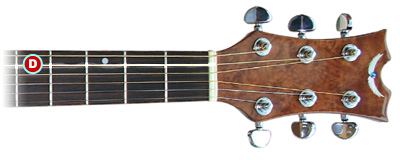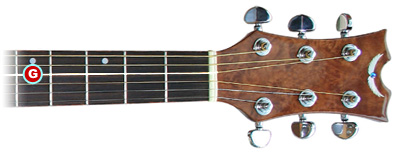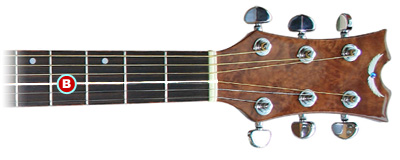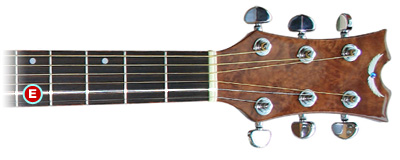There are a few different methods to tune a guitar. The most common types are Online Tuners, Digital Tuners, Reference Tuning, Relative Tuning or simply downloading a mobile app for your phone. Click here to get the Tuner App from Fender.
Since you are on this page, the easiest is to just use an online tuner like the one below. Simply click the play button to get the sound of the note for each string (E, A, D, G, B and E). Now just tune your guitar to match each string with each different note:
Digital and Electronic Tuners
The next method of tuning a guitar is to use a digital tuner or electronic tuner. Electronic and Digital Tuners are very precise. In fact, most of them give you a visual cue to when a string is in tune. Digital Tuners are great to have for any guitar player because they are very compact and easy to use.
Reference Tuning
This type of tuning is using another instrument or source to get the proper note that you are trying to tune. The most common type of reference is a piano. The reason for this is that piano strings stay in tune for very long periods of time.
On a piano, locate the middle C key. Now the E key above the middle C is the high E on the guitar. Play this E key on the piano and the high E string. Match up the sound by twisting the tuning peg for that string. Once you have a perfect match you will be in tune for that string.
Now, go downward on the piano to the rest of the corresponding keys – A, D, G, B and E. Keep tuning the guitar to these corresponding notes and you your guitar will be in tune.
This is a great way of tuning your guitar, but can be difficult if you have never done this type of tuning before. Once you get the hang of this it becomes very easy to tune your guitar this way.
Relative Tuning
- Step 1: The low E string on guitar is the string that usually stays in tune the longest because it is the thickest string. If you are going to tune using relative tuning you would use the low E string as reference. (You can tune this string using the piano method above and then tune the guitar to itself from there).
- Step 2: We will now tune the A string. On the low E string, put your finger on the 5th fret and play this note. This is the A note. Now while holding down this note play the 5th string on your guitar. This is also an A note. Go back and fourth playing these two notes and adjust the tuning peg on the 5th string until they match up.

-
Step 3: We will now tune the D string. Like the previous step, you will now tune D string. To do this, put your finger on the 5th fret of the A string and hold it down. Now play the open 4th string on the guitar. It is also a D note. Move the tuning peg on the open D string until the notes match up.

-
Step 4: We will now tune the G string. Repeat the process like before. Put your finger on the 5th fret of the D string. This will play a G note. Now tune the open G string to match this note.

-
Step 5: We will now tune the B string. This is the only tricky step in this tuning process because now you put your finger on the 4th fret of the G string. This will play the B note. Now you can tune the open B string to match this note.

-
Step 6: We will now tune the high E string. This is the final step to tuning your guitar using the relative method. Now place your finger on the 5th fret of the B string. This will give you an E note. Now play the open E string. Tune the open E string until the notes match.
